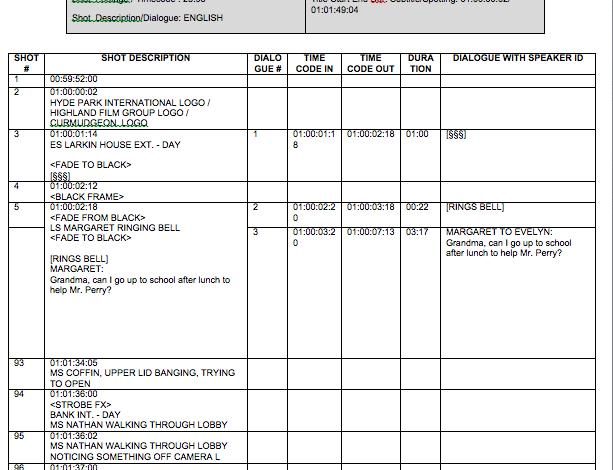
After the movie or program you are working on has been produced, it is important to learn about required postproduction materials. The two most important materials are the Dialogue and the spotting lists. These will help in the translation of subtitles to other languages and make it possible to close caption your movie or program. Therefore, if you want the creation to be seen all over the world, you need to understand spotting lists and other important postproduction materials. Additionally, it is important to know that you can go to professionals to get these materials sorted, and they can help you with their expertise.
A spotting list is a dialogue in a program or film that is broken down into individual subtitles. Each subtitle is called a spot. Additionally, this list includes anything that is spoken or any writing that may appear onscreen, such as book titles or signs. The main purpose of the spotting list is to make it easier for the film to be translated into a foreign language for people worldwide to enjoy it.
Other Postproduction Materials
Other postproduction materials are required from a producer. These materials will help create subtitles and closed captions for your film or program to be accessible abroad and to all nationally.
What is a Dialogue List?
A dialogue list is a time-coded postproduction script. It is a required deliverable that a producer submits to a network or production company. The dialogue list is used for translation purposes to create a spotting list. It will typically consist of a table with a timecode, character, and dialogue. Dialogue lists can include verbatim dialogue, sound effects, vocal sounds, music description, lyrics, characters, voiceovers, timecode, and chyrons.
CCSL & ABS
Besides the dialogue and spotting lists, there are also two types of post-production continuity lists that give an accurate transcript of a completed film. Combined continuity dialogue and spotting list, also known as CCSL, incorporates what is audible and visual on the screen. This list describes the shots within a scene from cut to cut. The broadcast script, also known as ABS, describes what is happening in the scene from its natural beginning to end.
Hire a Professional Team!
If you need a CCSL script for your film, Talking Type Captions can help you! We have been creating CCSL scripts for over 19 years. Our team of professionals has acquired experience with every network and film production to create the best final product. We also provide closed captioning services to ensure your film is accessible to all. We also offer audio description services and much more. Contact us to get a sample and learn more about our pricing.
Continuity dialogue and spotting lists are two tools that can be used to enhance your meeting planning process. In this article, we will explore how they can work together to help you connect with your team and make the most of your time in the room.
What Is Continuity Dialogue?
Continuity dialogue is a term used in screenwriting to describe the conversation between characters in a film or television show. It helps to establish the world and characters that the viewer is familiar with and helps to keep the story on track. In addition, continuity dialogue can help to highlight character relationships and develop them further.
Spotting lists are another common tool used in screenwriting. They are a list of specific words or phrases that should be observed when watching a particular scene in order to get a better understanding of what is happening. These lists can be helpful when trying to figure out what dialogue should be inserted into a particular scene, as well as helping to ensure that all of the necessary plot points are covered.



